Pedestrian 43: The Time It Takes to Reach Us
Christmas in Hawaii, Disposable Cameras, and the Clarity of a New Moon.
Last Wednesday’s new moon marked the start of the Lunar New Year. Just past midnight, I woke to the sound of exploding mortar fireworks outside my window, their flashes briefly lighting up the darkness of my bedroom.
The following afternoon, still a bit sleepy, I walked down 8th Avenue in Sunset Park, the heart of Brooklyn’s Chinatown, just a few blocks from home. Children gathered with lit sparklers, tossing snaps onto the pavement, their sharp cracks echoing down the street. Mothers watched with careful eyes, their attention divided between celebration and protection, against a backdrop of businesses closed for the holiday.
I moved into my apartment on Lunar New Year three years ago—the longest I’ve lived in one place since moving out of my childhood home in 2010. Naturally, the occasion invites reflection on both my past and future.
A new moon, I read, marks the start of a new cycle—a fresh beginning. Yet, it cannot be seen with the naked eye; the side facing Earth remains unlit by the sun. For astronomers, this absence of light brings clarity. With less brightness to wash out the sky, the stars emerge more vividly.
During a new moon, telescopes can peer deeper into space, capturing light from the early universe. The farther away an object is, the longer its light takes to reach Earth—meaning that under a dark sky, astronomers are literally looking into the past. To the naked eye, on a clear night, we can see as far as 2.5 million light-years away—the distance to the Andromeda Galaxy. For comparison, the light from the moon takes just 1.3 seconds to reach us.
As I looked up at the sky that evening, I checked my calendar and saw that the last new moon had fallen on December 30th—the day I returned from a seven-day trip to Hawaii with my girlfriend, Iris, to spend Christmas with her family.
It was an unusual moon—a black moon, the rare second new moon in a single month. The opposite of a blue moon, it’s a phenomenon that occurs roughly every twenty-nine months.
I didn’t gain any special clarity about my past or the universe, but I did leave Hawaii with a glimpse of a potential future.
I’m Alex Wolfe, a writer from Iowa living in New York City. You’re reading Pedestrian, an excuse to write about my walks (among other things) every month. Recently, Phil Cox wrote a well-crafted piece about my work and walks through Midtown—you can read it here.
“Why aren’t you saying anything?” Iris asked, as we drove from Honolulu Airport to her parents’ house on the eastern edge of Oahu. Her parents, who immigrated from South Korea long before she was born, had made a home here, thousands of miles from where my own family put down roots in Iowa. This was my first time meeting them.
Prior to takeoff from New York City, the cabin crew requested that all windows be shut for the eleven-hour flight. I spent the journey blanketed in darkness, save for the dim glow of in-flight monitors. Now, five hours behind, riding in the car, I felt my brain rearrange itself—old memories dissolving to make room for this new reality as I looked out the window. I’d been teleported, leaving behind trash and London Plane Trees, obstructed views and asphalt.
Now, there was warmth on my pale skin. Palm trees. Ocean expanse. Rugged mountains. The landscape—lush, sunlit, impossibly green for December—was surreal. And yet, I remained silent.
“What is it?” Iris pressed. I wondered how I had ever convinced her to visit my family in Iowa in the dead of winter—only now realizing what it meant for someone from a place like this.
“I’m just hungry,” I replied, keeping my silence in quiet amazement. When we first started dating in 2018, Iris had invited me to Hawaii, but I never went. Now, after everything—after breaking up and finding our way back to each other three years later—I couldn’t help but wonder why I had waited so long. And yet, as we arrived at her family’s home, I felt an immediate sense of warmth. Her parents welcomed me and we exchanged gifts, not just for Christmas, but as a gesture of welcome, a way of saying, I’m so happy to meet you.
Later, in her childhood bedroom, where I stayed, I kept zooming in and out of Google Maps, fixated on the blue dot anchored in the ocean—adrift in what felt like the middle of nowhere. But the next day, as we drove to Koko Head, highways, homes, and public transit came into view, reminding me that I was still, technically, within the totality of the United States.
I saw all the familiar tenants: McDonald’s—though here they served taro pie. 7-Eleven, but closer to an H-Mart, stocked with spam musubi and squid jerky. Hilton Hotels, Costco, Starbucks. They had Denny’s, too, but I forgot all about it after my first side of chili from Zippy’s—objectively the better restaurant.
At the top of the Koko Head Stairs, we stood beside an artificial Christmas tree, and I traced the coast of Maunalua Bay with my eye, looking toward downtown Honolulu—the direction I had vowed to walk. I cobbled together memories of other cities—Los Angeles, Miami—but nothing made sense. The forecast read 83ºF on my phone. Thick clouds hugged the ridges of the Ko‘olau Range. Playwright Tennessee Williams once said, “America only has three cities: New York, San Francisco, and New Orleans. Everywhere else is Cleveland.
He clearly had never been to Honolulu.
Throughout the trip, Iris led me to increasingly beautiful places—the Makapu‘u Tide Pools and a drive to Waimea Beach on the North Shore with her cousin and her boyfriend—but what stayed with me most were the places tied to her past: Kahala Mall, where she did her homework; Jewel or Juice, one of her favorite açaí bowl spots; Genki Sushi, a conveyor belt sushi restaurant; her high school; and, finally, church with her family—entirely in Korean—and the nursing home where her grandmother lived.
One morning, while eating breakfast, I looked through old family photo albums with Iris. Each photo was a portal to the past—frozen moments of childhood birthdays, family vacations, school portraits. If her family was a novel, I was being introduced to the characters, learning their histories, tracing the narrative I was now becoming intertwined with.
I thought about how photographs are another way of seeing into the past, not unlike looking at the stars. Just as light from distant galaxies shows us the universe as it once was, these images preserved fragments of time, proof that a moment had existed at all. In studying them, I understood Iris’s past more clearly, and in doing so, I felt closer to her.
Three days before December’s black moon, I asked Iris to drop me off in the Kahala Mall parking lot so I could make sense of Honolulu. I planned to walk to Kaimuki, where her father grew up, and, if I was lucky, reach the Bishop Museum, not far from where we had picked up our rental car. Moving my feet—as I have in so many cities—I felt the familiar sensation of refuge in an unfamiliar setting. Like the new moon, walking allowed me a certain clarity—something I’ve written about countless times before. But instead of revisiting the past, I was grounded in the present.
I’d purchased two more disposable cameras during the trip and, given the limited shots, was careful about what I chose to photograph. But this time, I wasn’t just preserving a place—I was preserving a history, a moment I could one day return to, the way I had looked through Iris’s family albums. Proof that I had been here—that this first trip to Honolulu wasn’t just passing through, but the beginning of something still unfolding. I let myself off the hook, knowing that whatever I missed would still be here, waiting, when I returned.
As I walked, I felt a relationship beginning to blossom and grow deeper—not just with this place, but with Iris, too. Staring at Diamond Head—a broad, saucer-shaped volcanic crater—I could imagine myself living here one day, if that was how our lives unfolded. The sun hung directly overhead, drifting closer to the horizon with each step. Somewhere unseen, the moon waited, its light still making its way to me. I walked onward.
Happy Lunar New Year. Thanks for reading.
—A.W.
Brooklyn, NY


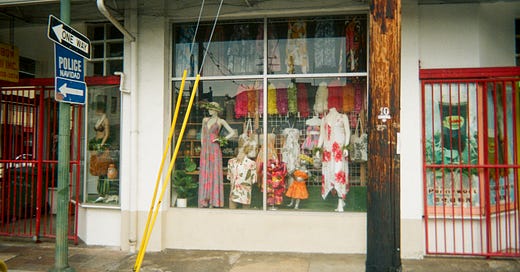


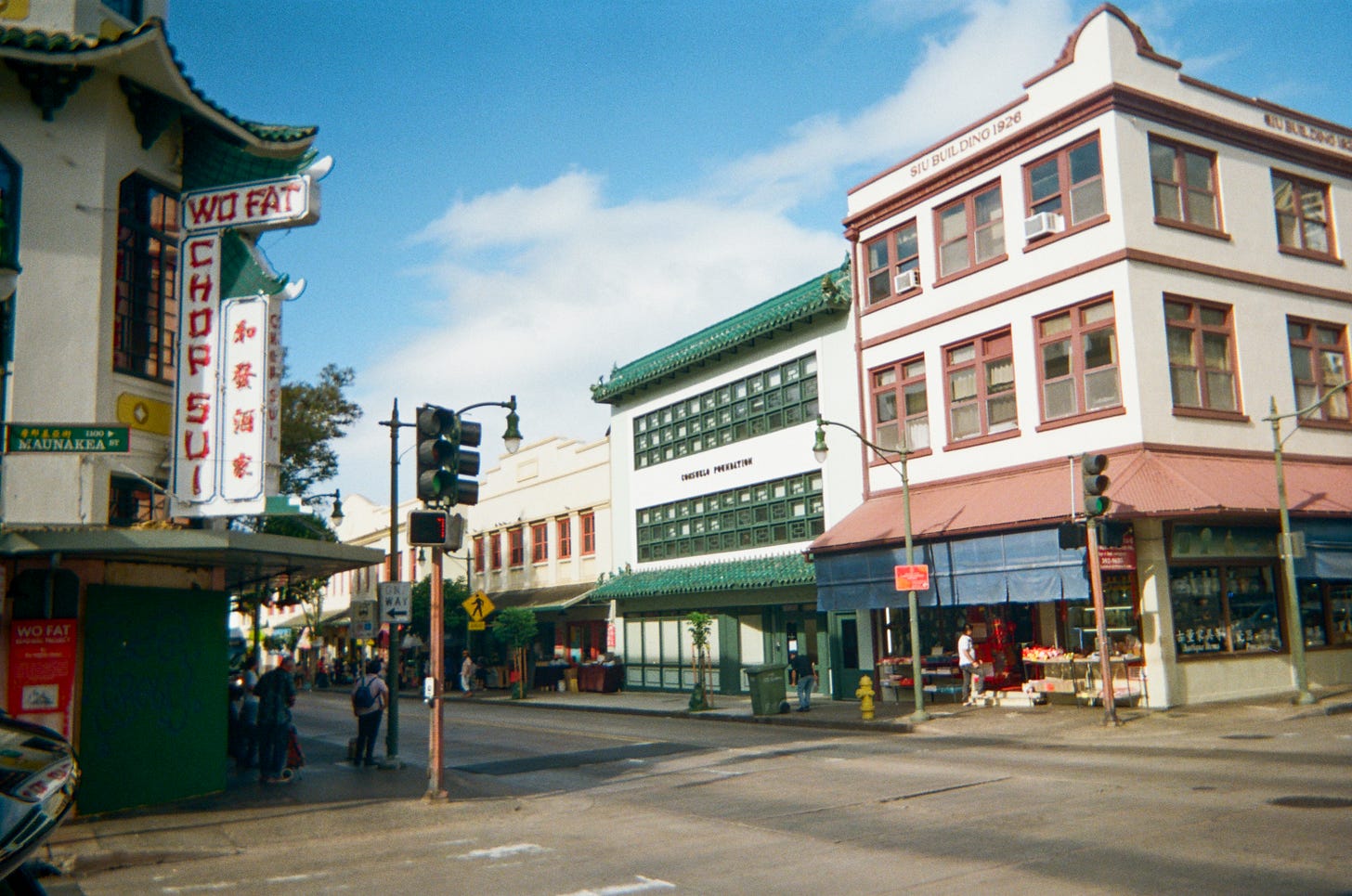
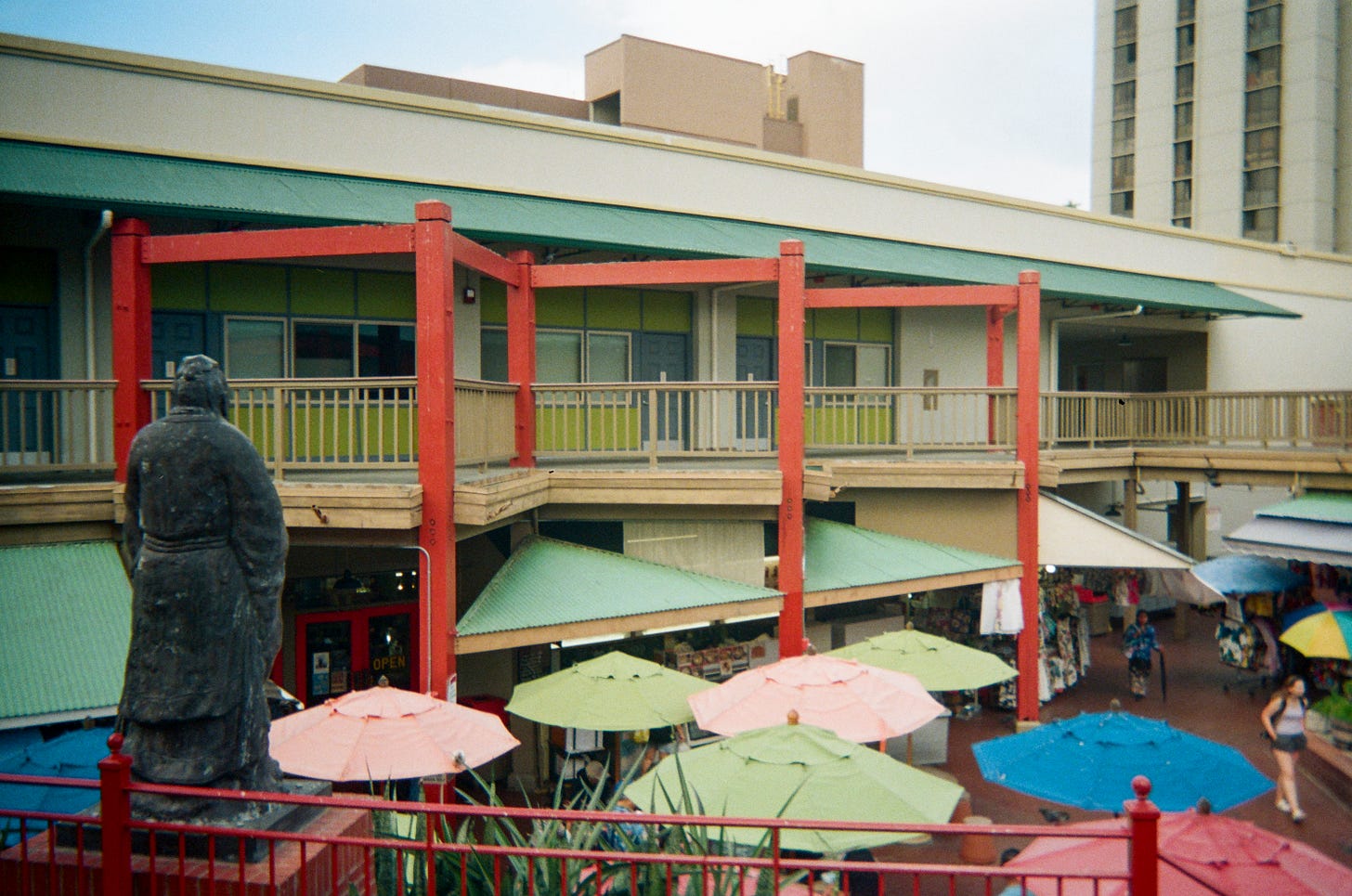
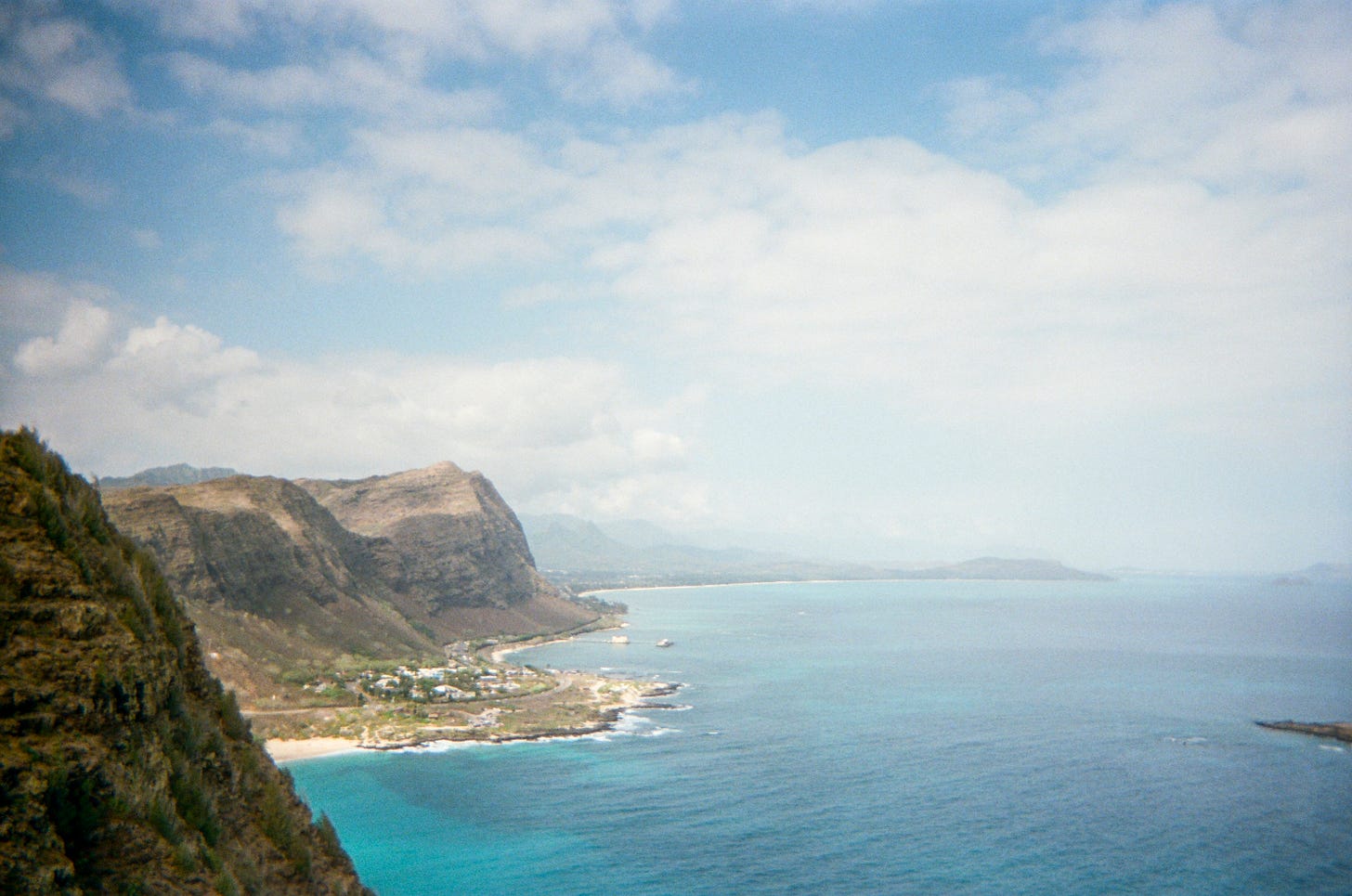
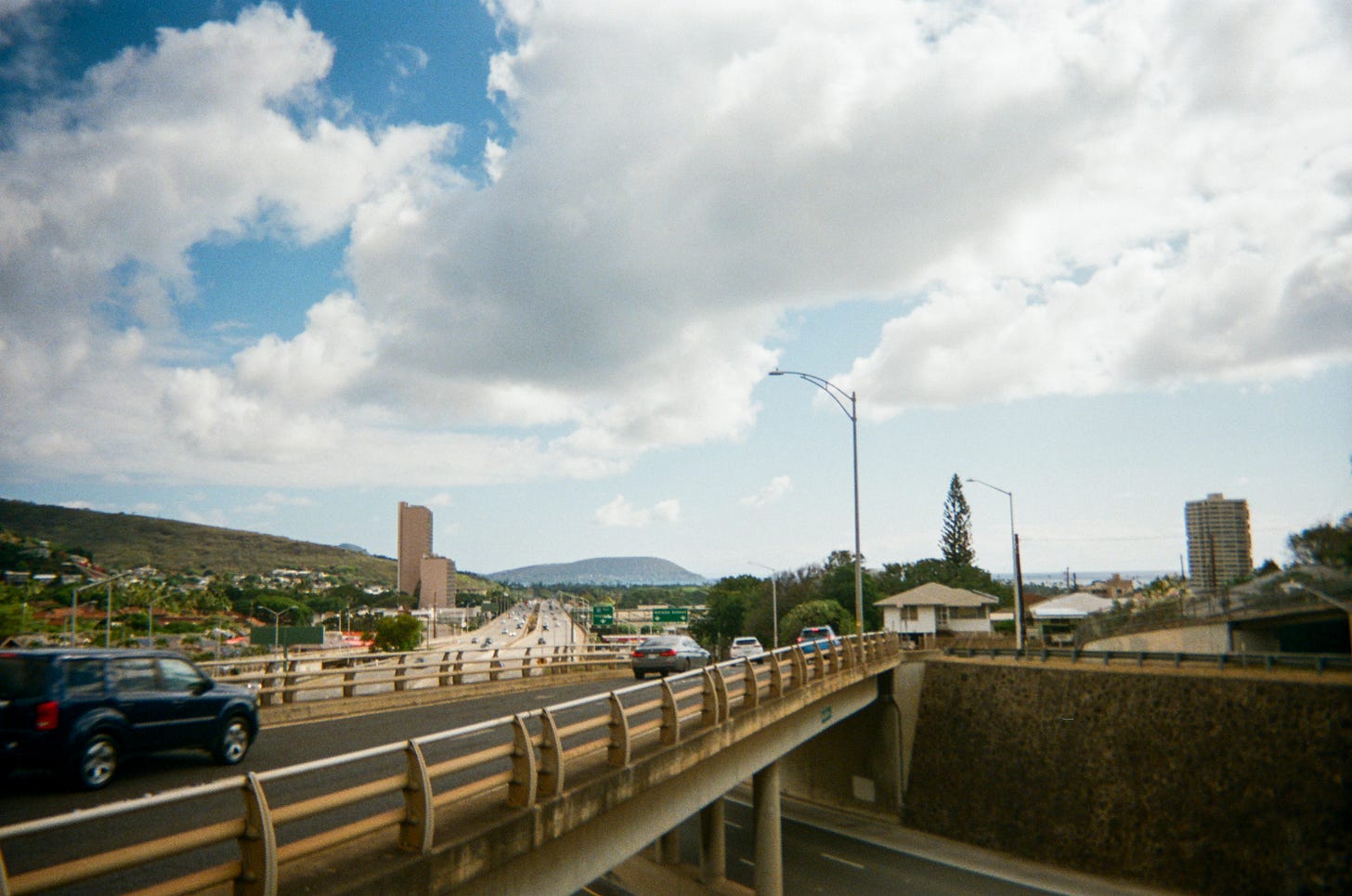
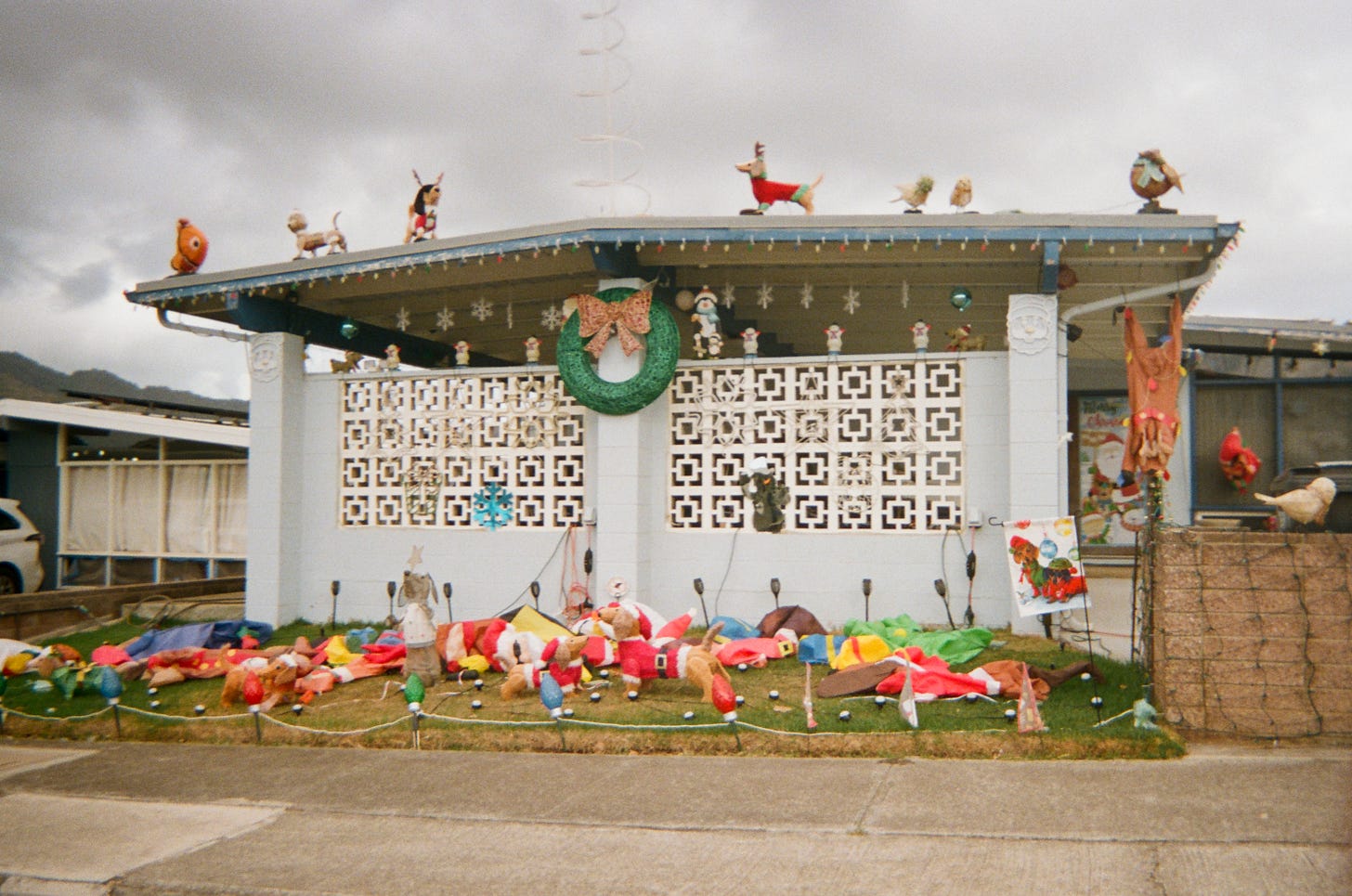
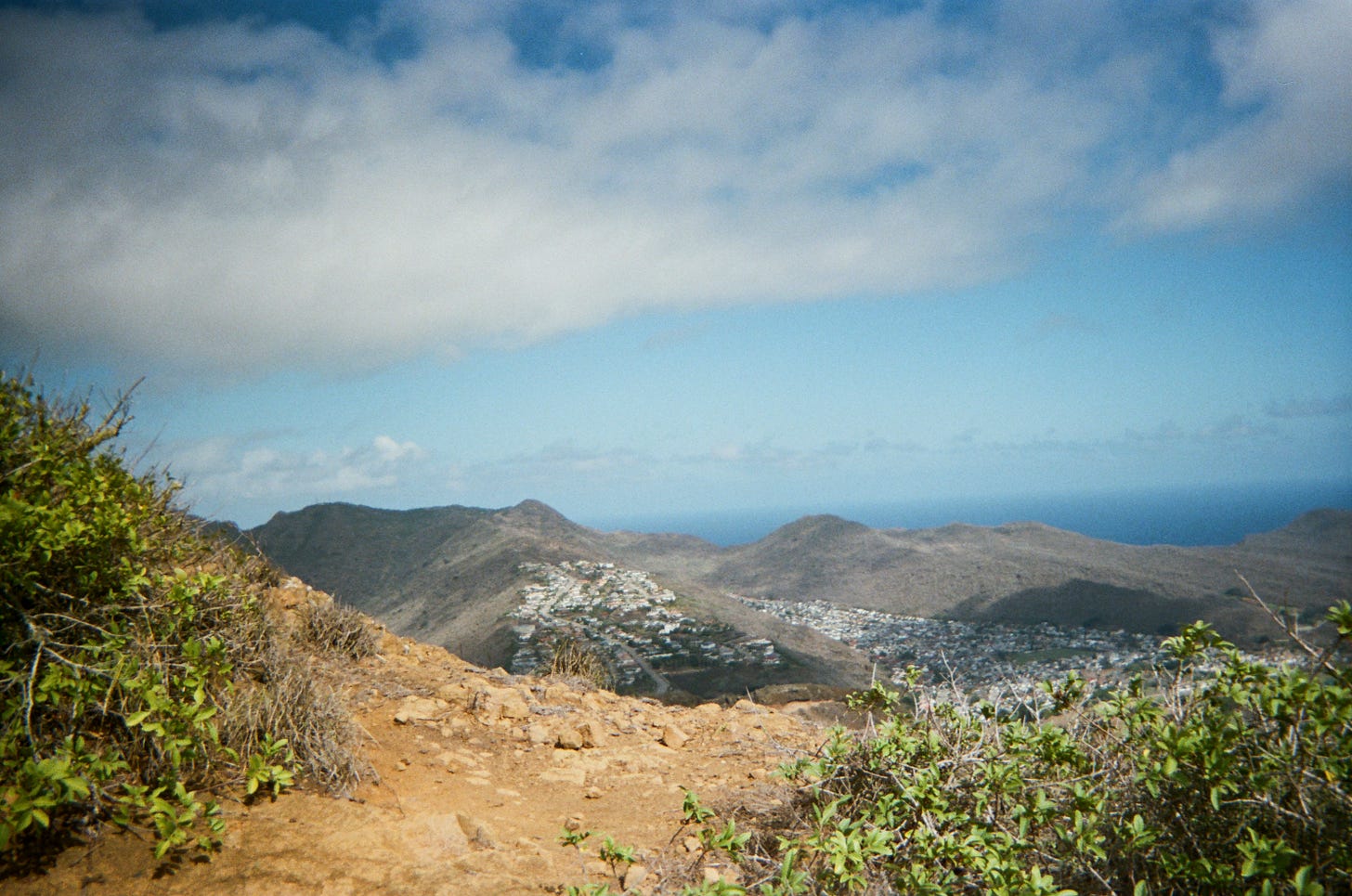
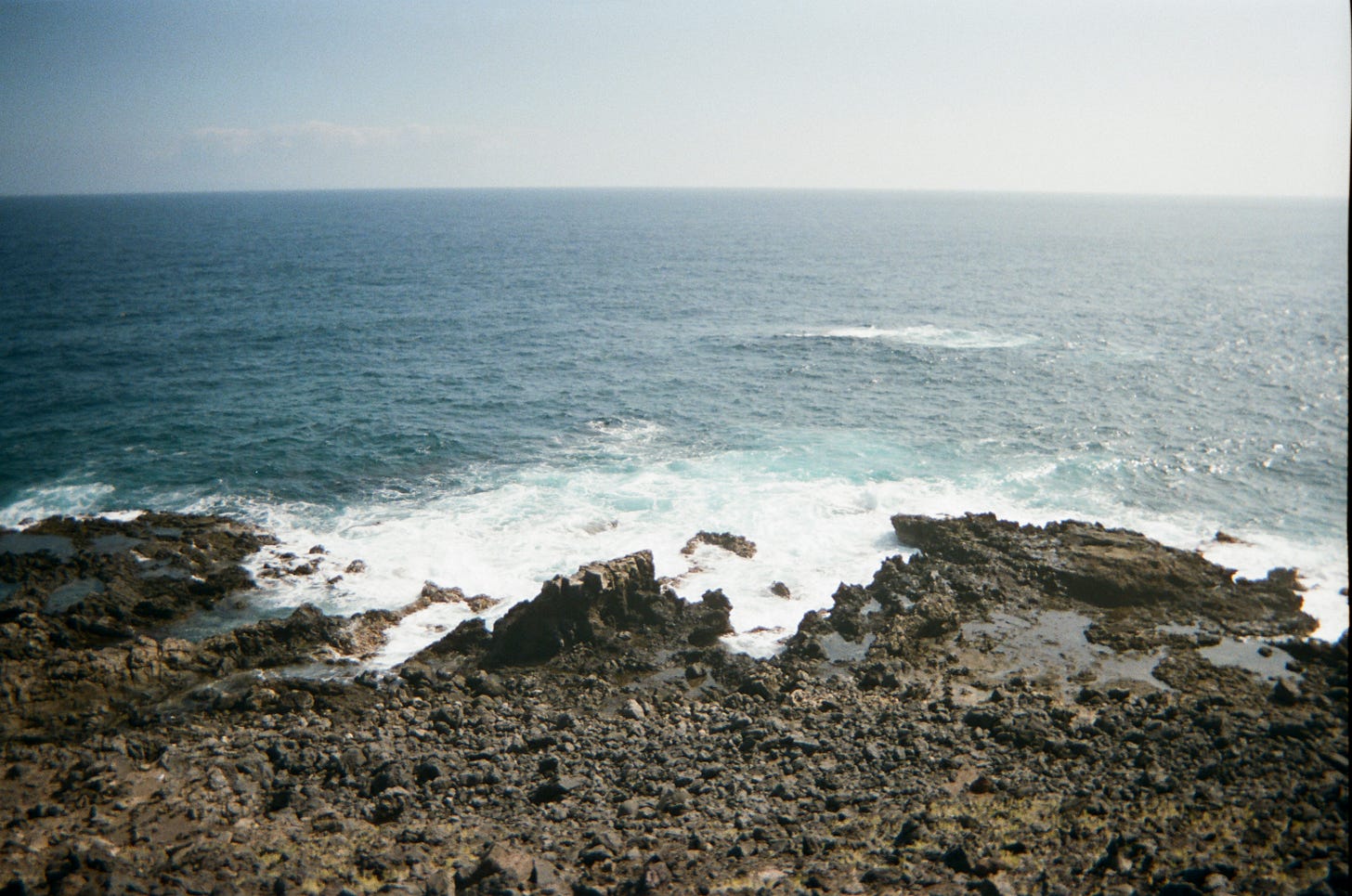
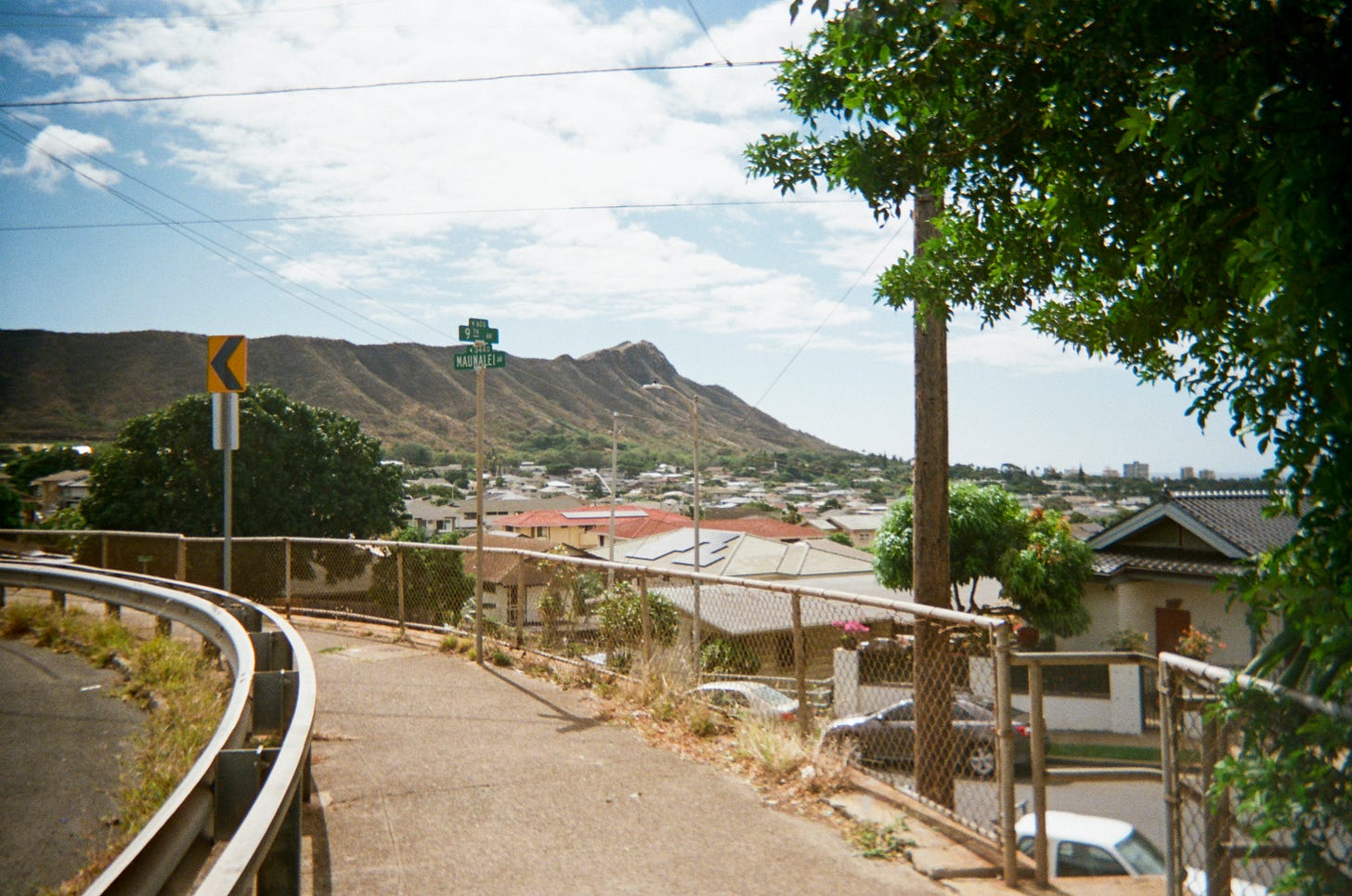
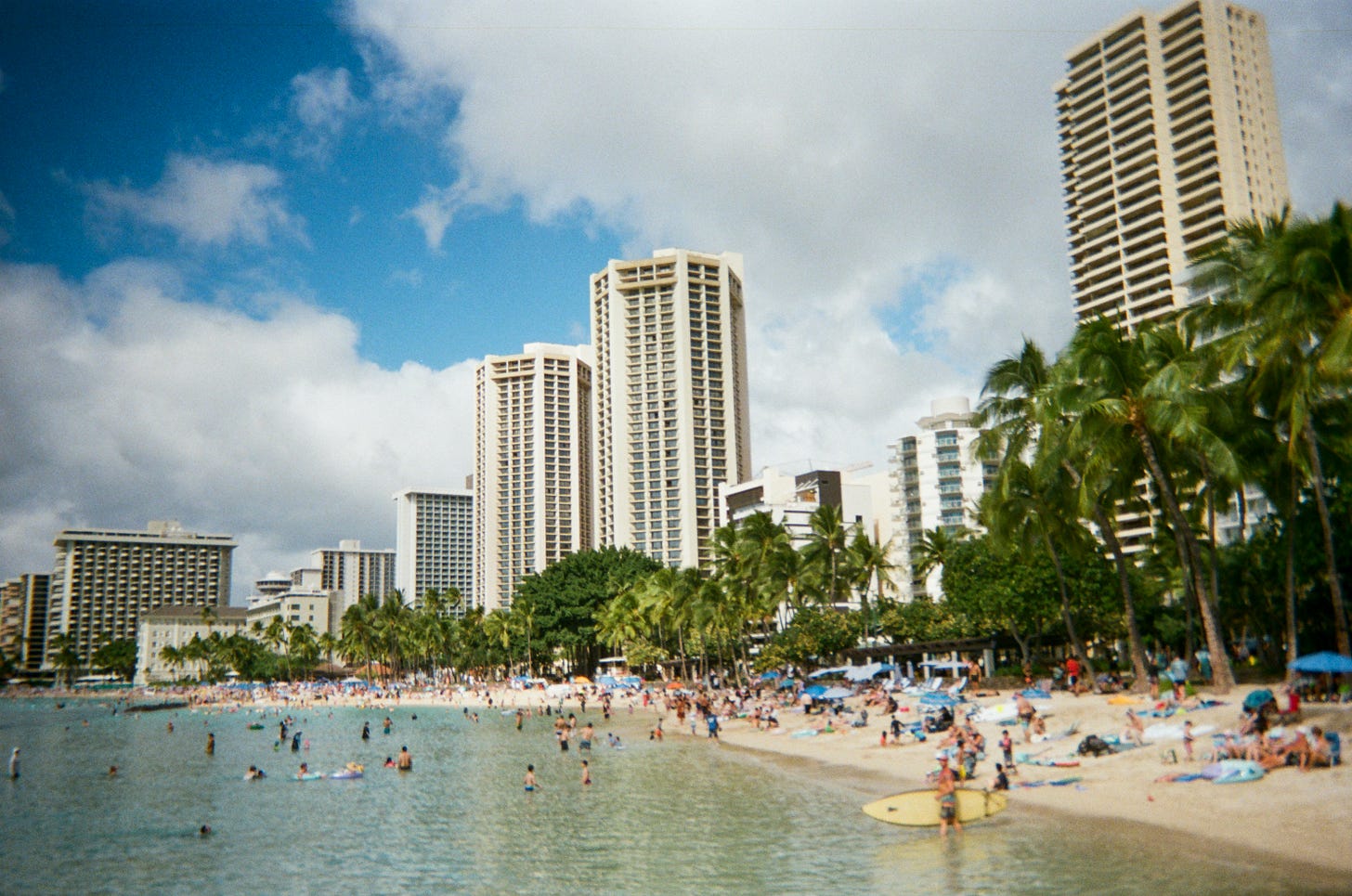

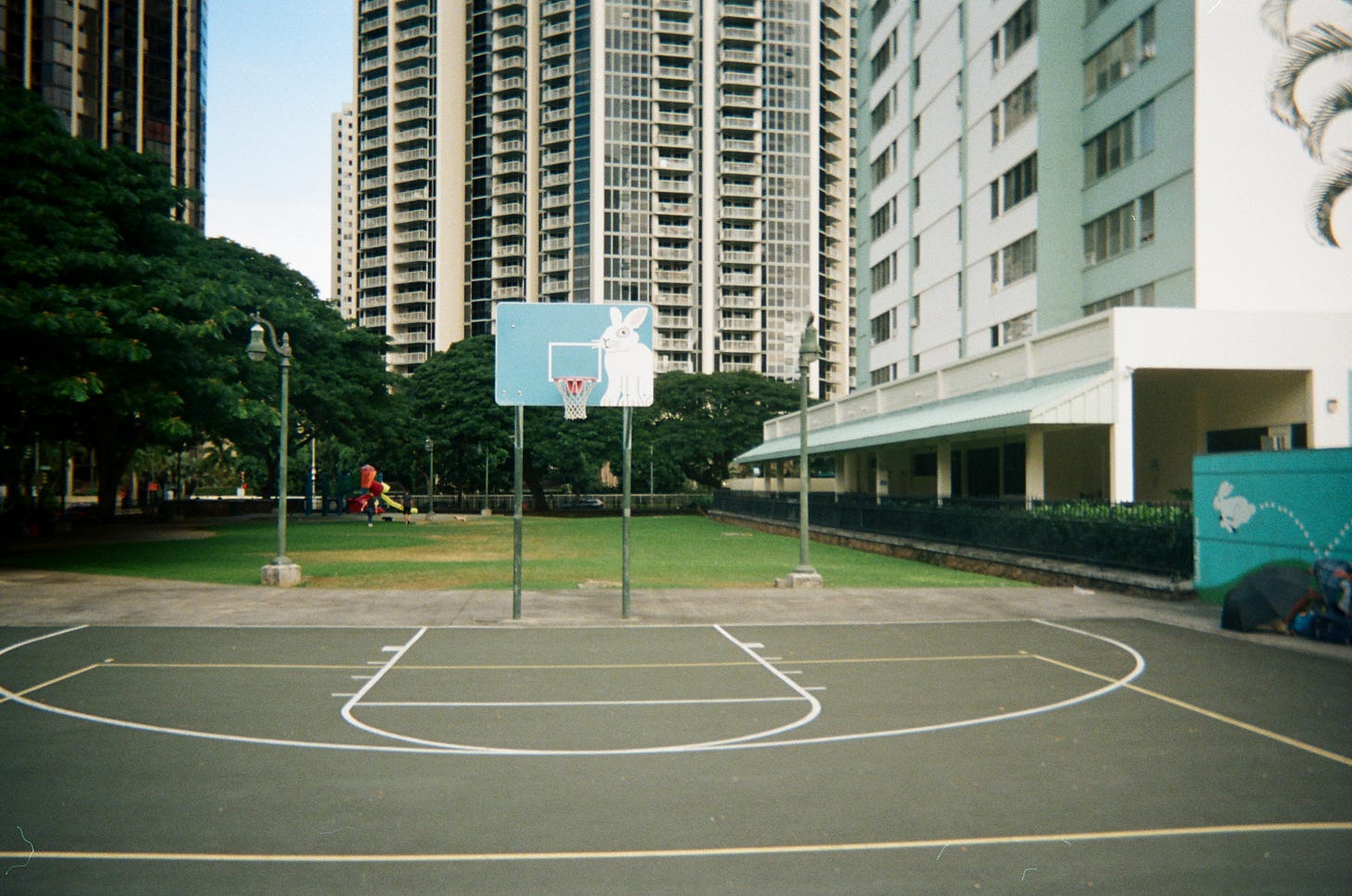
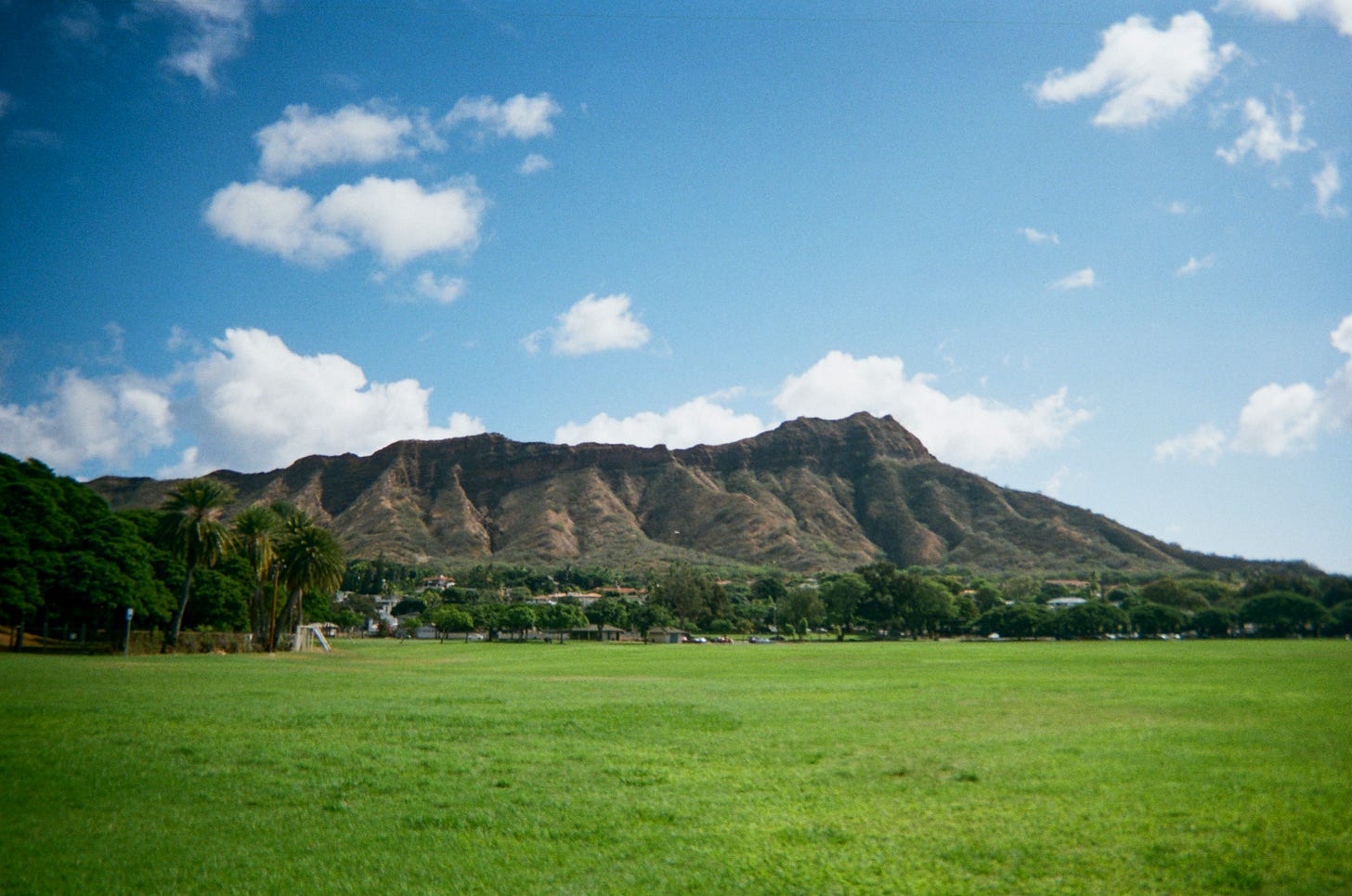
I really am struck at how well you connected looking at photographs (always in the past) and looking to the night sky (to a past so far it’s difficult to comprehend). This is going to stick with me.
Also, happy for you and Iris and clearly this trip was a milestone. Best wishes for you both